Beginnings of the local history
Beginnings of the local history
Around 950, Borghorst Abbey owned extensive landed property around Gescher, spread over ten farms. Among them was a farm called Gasgare, which gave name to the first parish and village of Gescher. It is unclear when exactly the original parish and the independent village of Gescher were founded, but this may date back to the period between 985 and 1020 AD. Previously, Gescher had belonged to Stadtlohn.
Originally, the parish consisted only of a church surrounded by a closed ring of houses and storehouses. Gescher then developed into a street village mainly along Hellweg, connecting Coesfeld and Stadtlohn. At times, the church even functioned as a refuge fort. The church and surrounding houses were protected by moats, which were fed by three streams. This protection system was abandoned after 1665. New streets such as Hauptstrasse, the southern church square, Armlandstrasse and Eschstrasse were built. The village then developed into a typical Westphalian street village, mainly towards the west and south-east.
The simple basic structure of the town centre remained largely intact until around 1950. Gescher’s appearance began to change partly due to the strong influx of German refugees from former East Germany who made Gescher their new home and also due to positive developments in the trade, service and industrial sectors.
The town centre and its immediate surroundings met with constant changes from the 1950s onwards. The network of roads had been rather limited until then and the changes and extensions now helped develop the town centre and the residential and commercial quarters surrounding it. Thus a modern urban development was initiated.
Further details on the local history can be seen on the adjacent board or at History Station F at Marien-Quartier.

Romanischer Taufstein, 11. Jh.
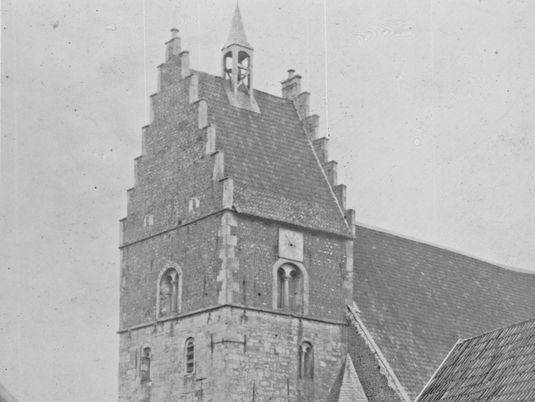
Gotische Pfarrkirche bis 1889
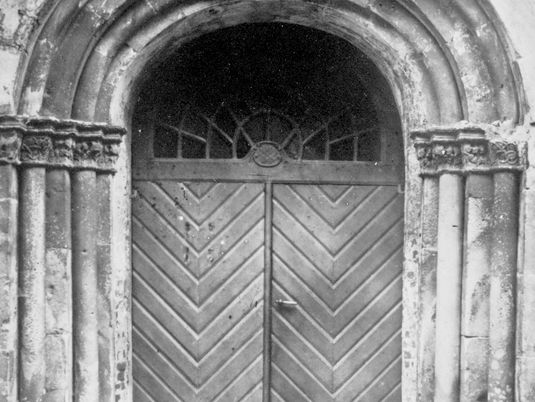
Hauptportal, 12. Jh.
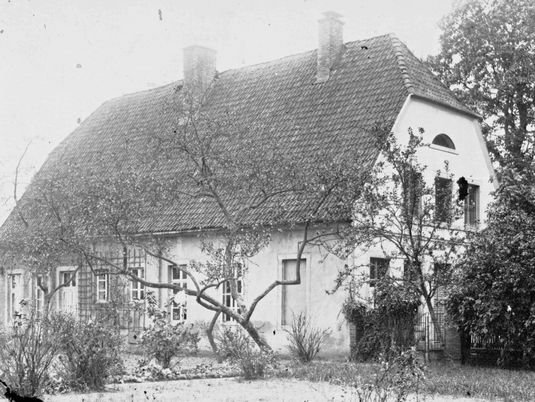
Der Oberhof Gasgare
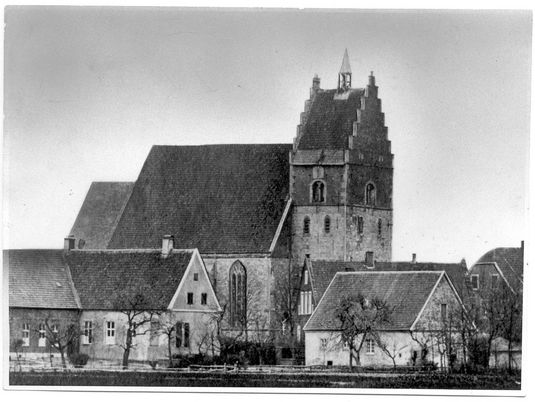
Nördlicher Ortskern um 1850

Westliche Hauptstraße um 1940
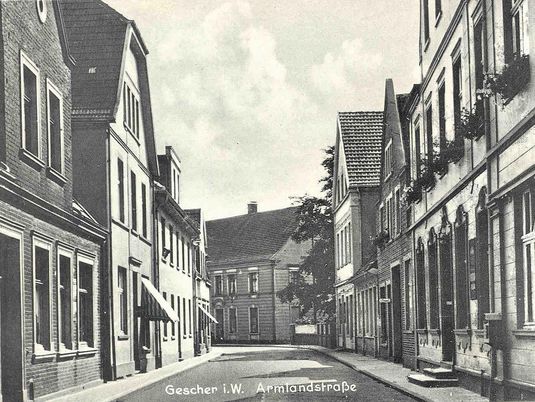
Armlandstraße um 1940

Südlicher Kirchplatz um 1920

Ortskern im Umbruch um 1966
Gescher in facts and data from 1500 to 1900
Around 1500 The parish has 520 tax-paying inhabitants. About half of them live in the village itself.
1570 Gescher burns down almost completely
1600 – 1650 Gescher is falling into decay due to military action during the 30-Year War. In 1623, a decisive battle is fought in nearby Lohner Bruch near Stadtlohn, where the troops of the Protestant commander Christian von Braunschweig clash with the army of the Catholic League led by Count Tilly. More than 6,000 soldiers lose their lives in the battle won by Tilly.
18th century Gescher experiences decades of economic upswing. Life in town is characterised by farming, crafts and trade, the beginnings of the textile industry and bell founding. The village is divided into six "Rott" districts. Each of them is headed by a Rott master, who significantly determines the political and social life and the order of the village.
After 1789 The effects of the French Revolution are also felt in and around Gescher
1803 Gescher is made part of the Ahaus district, which is placed under French control. For the first time, the village and the parish of Gescher are jointly administrated
1806 Alexius Petit the Younger settles in Gescher as a bell founder; his business had been established in Lorraine in 1690
From 1808 Serfdom is gradually abolished
1811 Munsterland falls to Prussia
1816 Gescher becomes part of the district of Coesfeld, which consists of six sub-municipalities
Around 1800 Beginnings of the textile production, first as a cottage industry, then changing to production on an industrial scale
1827 870 people live in the village and 2387 on farms
1839 A post office is established and in 1873, a telegraph station is added
From 1850 Structural changes in local farming, also due to the use of artificial fertiliser
1855 Haus Hall is established as an episcopal foundation
1861 Textile company H. & J. Huesker & Co. KG is founded and six years later the company operates 200 looms
From 1862 More textile companies are established, first as weaving mills, then also spinning mills. Flax and hemp are successfully cultivated, turning the region into a centre of European textile industry
From 1870 Industrial upswing, several metalworking companies
1873 Opening of hospital
1889 Neo-Gothic tower erected at Pankratius Church, still dominating the town silhouette today
1899 Huesker company supplies the village with light and power
1900 Gescher has 4200 inhabitants.

Historische Karte von 1579
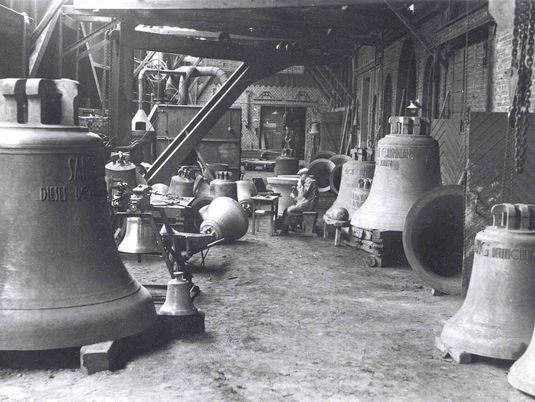
Bronzeguss seit 1690
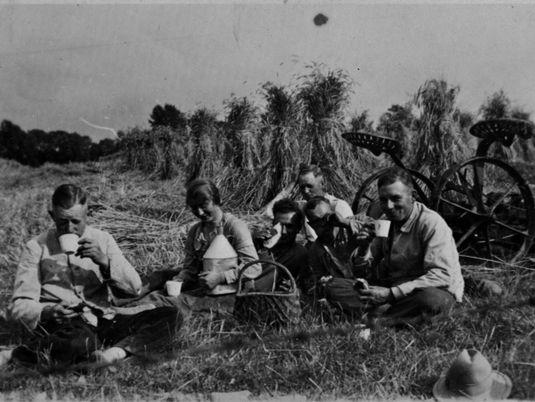
Landwirtschaft im Wandel

Beschwerliche Heimarbeit

Krankenhaus ab 1873

Industrielle Textilproduktion

Postexpedition im Hotel Grimmelt
Gescher in Facts and Data from 1900 to 1949
1905 Huesker company constructs an imposing spinning mill. A second, similar building is added only four years later.
1906 Industrial peat extraction starts in the "Weiße Venn" area of Hochmoor
1907/08 Gescher railway station is built; the line is linked to the regional railway network
1909 First workers settlement in Hochmoor (14 houses on Klasmannstrasse)
1912 Primary school opens in Hochmoor in what is today’s village museum
1914-18 World War I. 392 men from Gescher do active service. Sadly, 175 of them are killed or reported missing. Dire shortages in the village and in agriculture and, from 1915, food rationing on a nation-wide basis.
1920s Private building activities increase
1931 Construction of a road connecting "Gabelpunkt" with the northern edge of Hochmoor
1933 Moorland cultivation in the "White Fens" area, assisted by Nazi labour service; foundation of a local Nazi party and Hitler Youth
1934 The company Eckrodt builds a spinning mill on Fabrikstrasse
1935 Opening of swimming pool in Berkelbogen near "Alfer’s Mill".
1936 Gescher receives official coat of arms (three ducks in the river). Anton Huesker is made honorary citizen of Gescher (the only person so far)
1938 Riots against Jewish fellow citizens and their institutions during November Pogrom
1940 Inauguration of new primary schools, today’s Von-Galen-Schule
1941 Deportation of all 20 Jews from Gescher to Riga, Latvia
1944/45 A military hospital opens. Isolated bombings occur near the railway station, at the dummy airport Hochmoor and the eastern town centre (Koenigstrasse), where six residents die on 22 March.
Several aeroplanes crash in the outskirts of town, causing death, injury and considerable damage to property.
1945 Invasion of allied troops on Good Friday, 30.03.1945
550 people from Gescher killed and many injured during the war.
1946 Up to 2,300 refugees from the East are accommodated in Gescher.
1947 Founding of local history society with its first chairman Dr. Hans Hüer
1949 Gescher has 10,000 inhabitants.

Modernes Spinnereigebäude um 1908
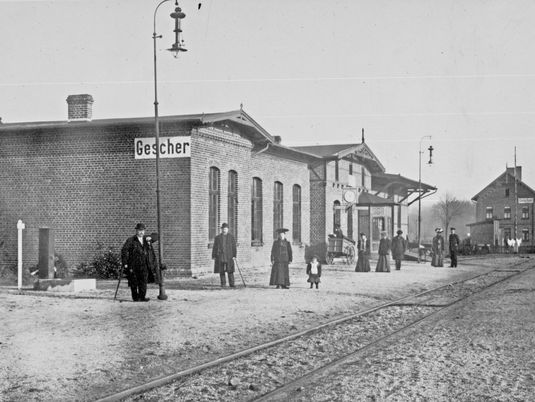
Bahnhof Gescher um 1910

Industrieller Torfabbau
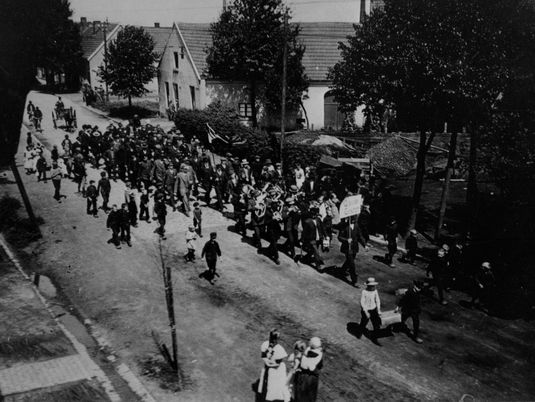
Marsch in den 1. Weltkrieg
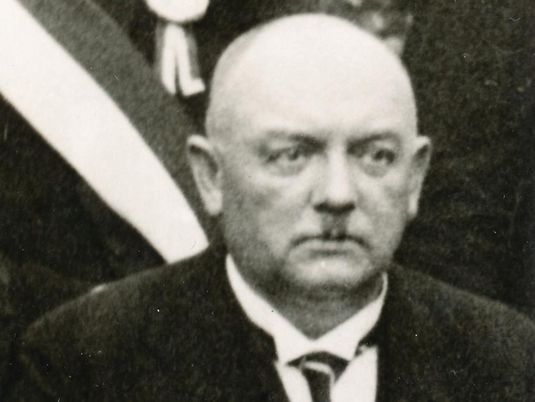
Der erste und einzige Ehrenbürger

Erste Badeanstalt 1935

Erste Badeanstalt 1935

Vertreibung nach Westen